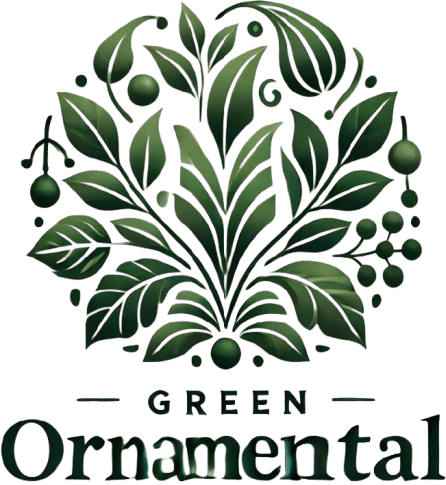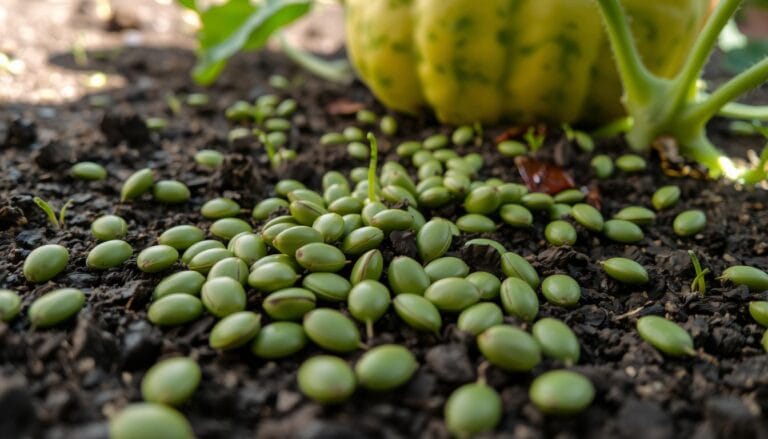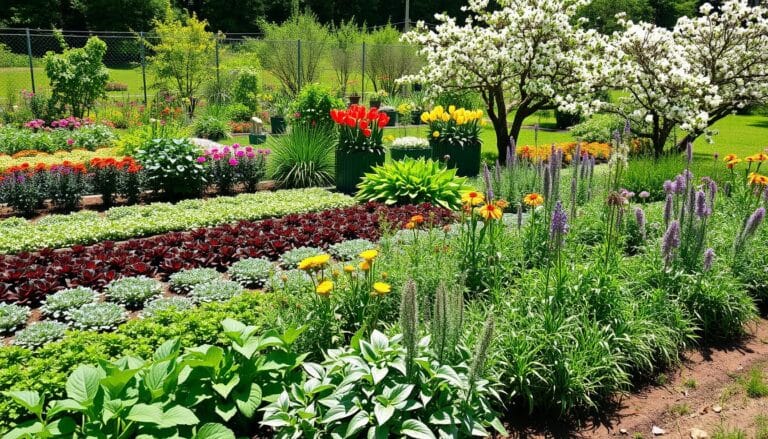Plant medicine ceremony: What is its role in traditional healing practices?

As you step into the sacred circle, the air is filled with the scent of burning sage and the beat of a drum. This is a moment of deep connection, where the physical and spiritual worlds meet. Welcome to the world of plant medicine ceremonies, an ancient practice that has been part of human societies for thousands of years.
These rituals are more than just using medicinal plants. They are a mix of sights, sounds, and feelings, all working together to bring balance and harmony. From the Amazon’s shamanic traditions to ancient Greece’s herbal remedies, sacred plants have always been key to holistic health.
At the center of these ceremonies is a deep respect for nature and the forces that shape our lives. Shamans act as spiritual guides, helping individuals and communities find healing. They use rituals, chants, and connect with plant spirits to tackle the root causes of illness, aiming to restore wholeness and connection.
Table of Contents
Understanding Ancient Healing Traditions and Their Evolution
Ancient healing practices go way back, even before written history. Archaeologists found evidence of shamanic rituals and plant medicines over 30,000 years ago. Many ancient cultures linked their medical systems with their spiritual and religious beliefs.
Origins of Traditional Plant Medicine
In ancient India, Ayurvedic medicine aimed to balance the mind, body, and spirit. It used many herbal remedies and holistic methods. In ancient Greece, Hippocratic medicine focused on observing nature and using plants to heal.
The Role of Spiritual Connection in Healing
In recent years, traditional healing has become more accepted in modern medicine. Techniques like acupuncture, herbal medicine, and meditation are now seen as helpful additions to traditional treatments. They help with many health issues.
Integration with Modern Healthcare Approaches
Today, ancient healing traditions are blending with modern medicine. This mix aims to use the best of both worlds. It promises a more complete and tailored approach to health care.
“The marriage of ancient wisdom and modern science holds the promise of a future where healthcare is not merely the treatment of symptoms, but a holistic journey towards optimal well-being.”
The Sacred Nature of Plant Medicine Ceremony
Plant medicine ceremonies are deeply sacred and spiritual. The sacred plant dieta is key in using plants like ayahuasca. Ayahuasca, a plant brew, is important in Amazonian traditions for healing and spiritual growth.
Ayahuasca is called the “Vine of the Soul.” It’s used in ceremonies for guidance and personal change. These events focus on community, creating a safe space for spiritual plant medicine exploration. The entheogenic journey with ayahuasca shows its power in spiritual awakenings.
“Ayahuasca ceremonies are held at night for spiritual healing. Participants are encouraged to engage fully, bringing their energy and intentions.”
Indigenous practices show ayahuasca’s sacred role in healing. Shamans guide these ceremonies, using their wisdom and spiritual connection. The dieta, or specific diet, prepares the mind and body for the sacred plant dieta experience.
The sacred nature of these ceremonies, like ayahuasca rituals, lies in personal growth and healing. By respecting these traditions, participants can start transformative entheogenic journeys. These journeys connect them to life’s broader web.
Indigenous Wisdom and Traditional Healing Methods
In Indigenous communities, the knowledge of plant medicines has been passed down for generations. This knowledge helps people care for their health and well-being. It comes from a deep spiritual connection with nature and the divine.
Knowledge Transfer Through Generations
Medicinal plants and healing rituals were once a natural part of community learning. People knew the healing powers of plants around them. Today, many Native people seek healing for past traumas and cultural loss.
Ceremonial Protocols and Practices
Sacred ceremonies are key to Indigenous healing. They show the connection of all life and the need for balance. These ceremonies use medicinal plants with spiritual significance.
Sacred Plant Relationships
Traditional healers believe everyone has healing abilities. From a mother caring for her child to a friend offering words of kindness. This view is reflected in the respect for sacred plants in ceremonies.
“The Medicine Wheel is a symbol that dates back thousands of years, indicating its longstanding ceremonial significance. This ancient symbol is divided into four quadrants representing the cardinal directions, colors, elements, animals, and life stages. The Medicine Wheel is crucial for spiritual and healing practices in Indigenous communities.”
Using Indigenous knowledge, like the Medicine Wheel, in healthcare can be beneficial. It leads to more inclusive and equitable health approaches. By respecting traditional healing methods, we can improve health and well-being for all.
The Role of Shamans as Traditional Healers
Shamans are key figures in using plant medicines for healing. They are spiritual guides and healers with deep knowledge. In plant medicine ceremonies, they lead rituals with songs, prayers, and intentions for healing and change.
They help people understand their experiences, making sure they are safe. This makes plant medicines more effective for treating mental health issues like anxiety and depression.
Shamans connect the physical and spiritual worlds. They use their knowledge and spirit connections to help people heal and grow. They protect and guide participants in plant medicine ceremonies with songs, objects, and intuition.
| Shaman Responsibilities | Ceremony Practices |
|---|---|
|
|
The shaman’s role is deeply rooted in indigenous cultures worldwide. They bridge the spiritual and physical worlds. Shamans are crucial in plant medicine retreats, leading participants on a journey of shamanic healing and personal growth.

“The shaman is the guardian of the soul, the healer, the intermediary between the human and the spirit world.”
Sacred Plants and Their Ceremonial Uses
In traditional healing, some plants are very special. They are used in ayahuasca and psychedelic ceremonies. These plants help people enter new states of mind and change deeply.
Common Medicinal Plants in Ceremonies
Some well-known medicinal plants used in ceremonies are:
- Ayahuasca, a mix that makes people see visions
- Peyote, a cactus with mescaline
- Iboga, a shrub with ibogaine
- Salvia divinorum, a plant that changes perception
Preparation Methods and Rituals
Making these plant spirits is a careful process. It involves rituals passed down through generations. Every step is done with respect and purpose, making the experience special.
Spiritual Properties of Different Plants
Each medicinal plant has its own spiritual properties. For instance, ayahuasca helps with self-reflection and healing. Peyote is known for spiritual growth and feeling connected to something greater.
“The plants are our teachers, and they have much to share with us if we approach them with reverence, humility, and an open heart.”
Plant Medicine Ceremony Structure and Process
Ayahuasca rituals and other plant medicine ceremonies often happen in peaceful, natural places. This helps deepen the connection with nature and spiritual realms. Participants drink the ceremonial brew under the watchful eye of an experienced shaman. The shaman leads the ceremony and supports the group on their journey.
These transformative rituals can lead to deep visions, emotional releases, and insights. These experiences help with healing and self-discovery. The ceremony’s structure allows for deep introspection, support from others, and a sense of belonging. It helps address issues like trauma, addiction, and other psychological challenges.
Preparing for the Ceremony
Getting ready for an ayahuasca ritual or similar ceremony involves important steps. Participants follow a specific ceremonial protocol. This may include:
- Following a special diet, avoiding foods like red meat, alcohol, and caffeine before the ceremony.
- Practicing spiritual activities like meditation, setting intentions, and journaling to prepare mentally and emotionally.
- Learning about the ceremony’s structure and potential experiences, such as purging or intense visions.
Creating a safe, sacred space for the ceremony is key. Experienced facilitators or a skilled shaman guide the space. They support participants on their shamanic journey.
The Ceremony Experience
During the ceremony, participants drink the ceremonial brew and explore their inner world. The shaman guides the group through rituals, chanting, and traditional music. This enhances the spiritual experience.
People may have intense visual hallucinations, emotional releases, and personal insights. The ceremony offers a safe space to surrender and let the medicine guide their healing and self-discovery.
Integration and Aftercare
The insights and transformations from the ceremony continue after it ends. Integrating these lessons and practicing self-care are important for healing. Participants are encouraged to spend time in nature, practice mindfulness, and seek support from integration circles or mental health professionals.

“The Ayahuasca ceremony is a doorway to the sacred. It is a profound and transformative journey that can facilitate deep healing, self-discovery, and connection with the natural world and the divine.”
The Healing Benefits of Plant Medicine Rituals
Plant medicine ceremonies tap into ancient wisdom for deep healing. They offer a holistic way to wellness. This approach boosts consciousness expansion, holistic healing, and spiritual well-being.
Physical Health Improvements
Substances like ayahuasca may help with depression, anxiety, and PTSD. Studies show they can improve brain connections and emotional control. This helps people face and heal from past traumas.
Emotional and Mental Healing
People often feel clearer and more emotionally aware after these rituals. They gain a deeper sense of spiritual well-being. This approach helps understand ourselves and our connection to the world.
Spiritual Growth and Transformation
Plant medicine ceremonies honor nature and our connection to it. They help us find our true selves. This journey of consciousness expansion brings purpose and peace.
“The use of plant medicines in traditional healing practices is not just about physical or mental well-being; it is a holistic approach that embraces the spiritual dimension of our existence.”
The world is looking for new health options. Plant medicine rituals show the value of ancient wisdom. They offer a path to consciousness expansion, holistic healing, and spiritual well-being.
Safety and Ethics in Plant Medicine Ceremonies
Exploring plant medicine ceremonies means putting safety first and following ethical guidelines. With the rise of ayahuasca and other plant medicines, it’s key to be careful and do your homework before joining a ceremony.
Look for trusted advice from respected Traditional Elders, Healers, or Medicine People. They can guide you to safe and reliable practitioners. The legal issues with plant medicines in Western countries add complexity. It’s important to respect cultural traditions and follow the law.
Keeping everyone safe and respecting the sacred nature of these ceremonies is a big responsibility. Choose retreats that focus on personal growth, offer preparation and integration, and have small groups. Remember, plant medicines are for ongoing self-discovery and healing, not a quick fix.
FAQ
What is the role of plant medicine ceremonies in traditional healing practices?
What is the history and origins of traditional plant medicine practices?
How do plant medicine ceremonies integrate spiritual and cultural traditions?
What is the role of traditional healers and elders in plant medicine practices?
What is the role of shamans in plant medicine ceremonies?
What are the key components and characteristics of plant medicines like ayahuasca?
How do plant medicine ceremonies typically unfold?
What are the therapeutic applications of plant medicines like ayahuasca?
What are the safety and ethical considerations surrounding plant medicine ceremonies?
Source Links
- The evolution of ancient healing practices: From shamanism to Hippocratic medicine: A review – https://pmc.ncbi.nlm.nih.gov/articles/PMC11245246/
- Ayahuasca’s Role in Traditional Medicine vs. Western Medicine: A Comparative Analysis of Healing Practices – Ayahuasca In Colombia – https://ayahuascaincolombia.com/2024/08/11/ayahuascas-role-in-traditional-medicine-vs-western-medicine/
- Ayahuasca Foundation | Ayahuasca Information – https://www.ayahuascafoundation.org/information/ayahuasca-tradition/ayahuasca-information/
- What Western medicine can learn from the ancient history of psychedelics – https://www.bbc.com/future/article/20240910-the-ancient-history-behind-healing-trauma-with-psychedelics
- Bhutanese Traditional Medicine: Ancient Healing Practices – https://medium.com/@wankhedekaustubh5/bhutanese-traditional-medicine-ancient-healing-practices-3bae93ba2cbe
- The Basics of Ayahuasca | Plant Medicine Ceremony – https://exploredeeply.com/live-your-purpose/ayahuasca-plant-medicine-ceremony
- Ayahuasca Foundation | Ayahuasca Ceremonies – https://www.ayahuascafoundation.org/information/ayahuasca-tradition/ayahuasca-ceremonies/
- Healing Ourselves as Indigenous People – https://www.aft.org/hc/spring2024/lee
- The Indigenous Medicine Wheel | Undergraduate Research in Natural and Clinical Science and Technology Journal – https://www.urncst.com/index.php/urncst/article/view/675
- The Role of the Shaman in Ayahuasca Ceremonies – Ayahuasca In Colombia – https://ayahuascaincolombia.com/2024/07/29/the-role-of-the-shaman-in-ayahuasca-ceremonies/
- Shamanism – https://en.wikipedia.org/wiki/Shamanism
- Psychoactive and other ceremonial plants from a 2,000-year-old Maya ritual deposit at Yaxnohcah, Mexico – https://pmc.ncbi.nlm.nih.gov/articles/PMC11051596/
- Plants – Native Memory Project – https://nativememoryproject.org/plants/
- Preparing for Ayahuasca: A Guide to the Ceremony – Plant Magic – Denver | Plant Medicine & Psychedelic Resource Center – https://plantmagiccollective.org/preparing-for-an-ayahuasca-ceremony/
- A Master Plant Dieta – Deva Yama – https://devayama.com/sacred-plants/a-master-plant-dieta/
- What is an Iowaska Ceremony? An Intro to This Spiritual Experience – Ayahuasca In Colombia – https://ayahuascaincolombia.com/2024/11/27/what-is-an-iowaska-ceremony-an-intro-to-this-spiritual-experience/
- Ayahuasca: Use, Benefits, and Side Effects – https://www.healthline.com/nutrition/ayahuasca
- What is Ayahuasca? – https://www.gaiaherbs.com/blogs/seeds-of-knowledge/what-is-ayahuasca?srsltid=AfmBOooSmVdo6zwvw1pkKud0_UmrUgiIF40n-nNFYMLs4Kb5T4oczUnW
- Plant Spirit Medicine: A Path of Personal Healing and Spiritual Transformation — Plant Spirit Medicine Woman – https://www.plantspiritmedicinewoman.com/wisdom/plant-spirit-medicine-a-path-of-personal-healing-and-spiritual-transformation
- Honouring Ayahuasca: Ethical Travel Tips and Considerations – The Altruistic Traveller – https://thealtruistictraveller.com/blog/honouring-ayahuasca-ethical-travel-tips-and-considerations/
- The Ethics of Ayahuasca: Sourcing and Sustainability – Ayahuasca In Colombia – https://ayahuascaincolombia.com/2024/07/26/the-ethics-of-ayahuasca-sourcing-and-sustainability/
- Certificate in Ceremony, Ethics & Reciprocity – https://chacruna.net/ceremony-ethics-reciprocity/
There are no reviews yet. Be the first one to write one.






